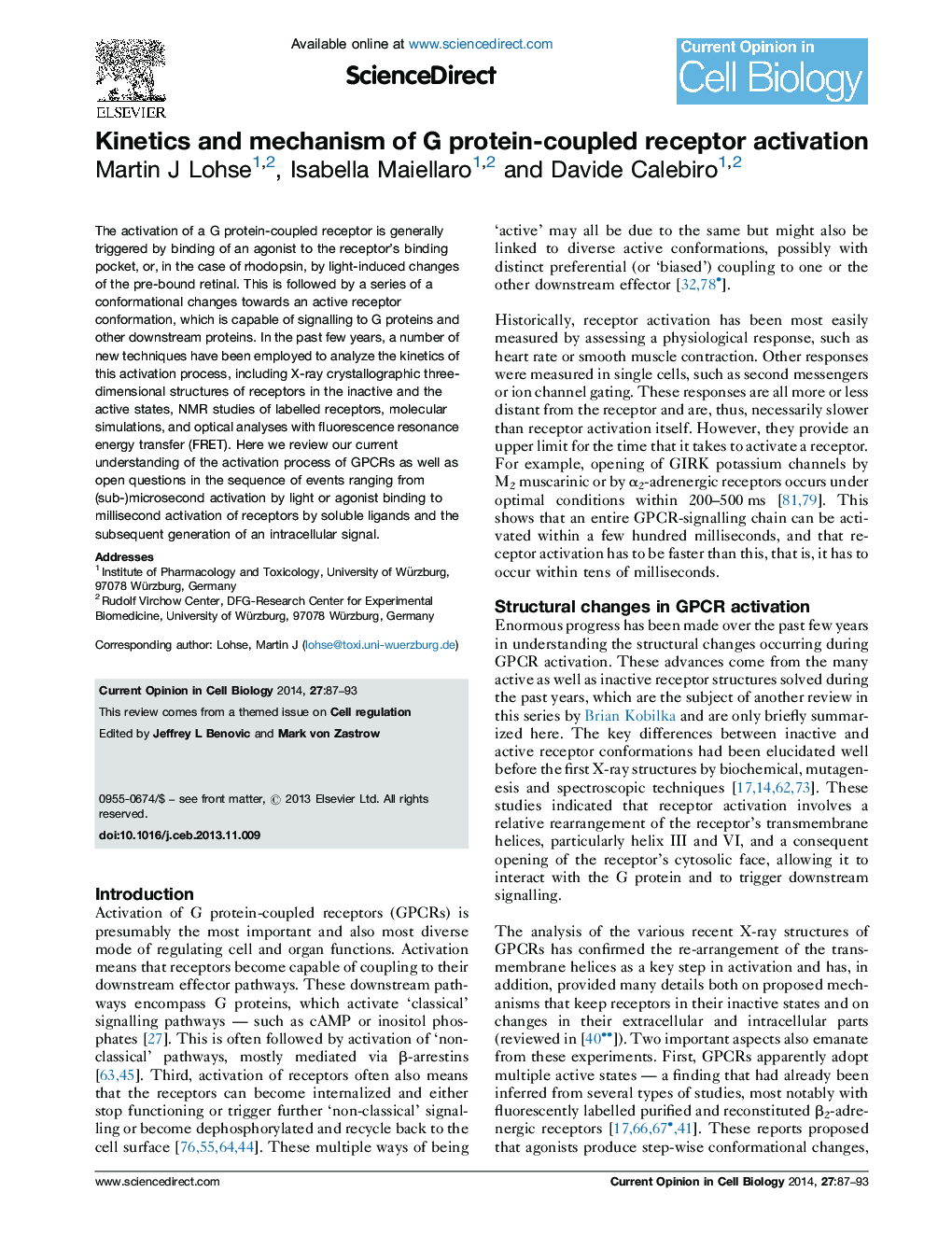| Article ID | Journal | Published Year | Pages | File Type |
|---|---|---|---|---|
| 8465996 | Current Opinion in Cell Biology | 2014 | 7 Pages |
Abstract
The activation of a G protein-coupled receptor is generally triggered by binding of an agonist to the receptor's binding pocket, or, in the case of rhodopsin, by light-induced changes of the pre-bound retinal. This is followed by a series of a conformational changes towards an active receptor conformation, which is capable of signalling to G proteins and other downstream proteins. In the past few years, a number of new techniques have been employed to analyze the kinetics of this activation process, including X-ray crystallographic three-dimensional structures of receptors in the inactive and the active states, NMR studies of labelled receptors, molecular simulations, and optical analyses with fluorescence resonance energy transfer (FRET). Here we review our current understanding of the activation process of GPCRs as well as open questions in the sequence of events ranging from (sub-)microsecond activation by light or agonist binding to millisecond activation of receptors by soluble ligands and the subsequent generation of an intracellular signal.
Related Topics
Life Sciences
Biochemistry, Genetics and Molecular Biology
Cell Biology
Authors
Martin J Lohse, Isabella Maiellaro, Davide Calebiro,
